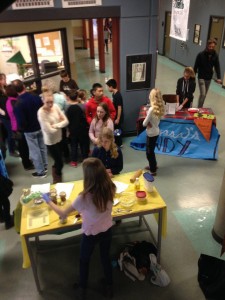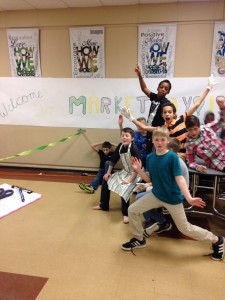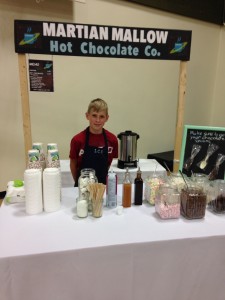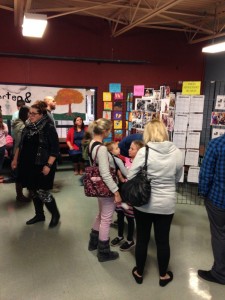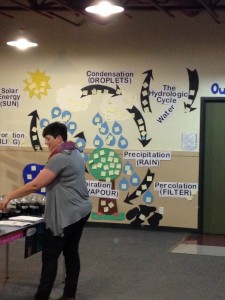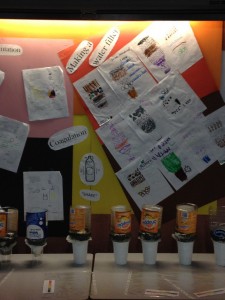I was approached by two of our Grade 12 students to publish their research project they did for Social Justice 12 course. Mehala Breederland did her project on eating disorders and Elizabeth Humphrey did her’s on self harm. In the middle school we have a motto that we ask students to do real work with a real need for a real audience. So I agreed to publish the girls work, here is the second project by Elizabeth.
Self Harm
The last thing we want for those we care about, especially our children, is for them to be in any form of pain or discomfort. When we think of pain, we think of physical pain, the pain you can see. There’s a different kind of pain that a majority of our population experiences and yet doesn’t fully understand. This pain isn’t visible, it accumulates in the deepest part of the mind, I’m talking about emotional pain. It is easily hidden and can go untreated for years.
In todays society, teens are constantly being bombarded with messages, that for the most part are not very up lifting. Through advertisement, music, literature and in some cases, the home, they are being told what to say, what to think and what to feel. to a teen or young adult these things are crucial to “fit in” or to seem desirable to their counterparts. From wanting succeed in what seems like the impossible task of completing school, and in work, and just in general to succeed in life, it can all become too much. This sense of being overwhelmed engrosses teens and most are not entirely sure how to handle this wave of new unwanted emotions. Their healthy coping skills become compromised, and are replaced with a multitude of unhealthy coping skills.
The most common unhealthy way of coping is self-harm or self- injury. It can radiate from cutting, burning, pulling out hair, starvation or isolation. Cutting is the most practiced form of self-harm. Yearly, 1 in every 5 females and 1 in every 7 males engage in cutting. In order to understand what teens are going through, you first need to understand what they are doing to their bodies. Cutting, by definition, is an attempt to interrupt strong emotions and pressures that seem impossible to handle. A great number of teenagers who do cut are wanting to feel alive. Sounds weird right? Hurting yourself to feel alive. For some, seeing the blood reminds them that their heart is still pumping. For others,the pain reminds them that they can still feel. Having that constant feeling of being overwhelmed or unwanted can wear on your body. Many feel like they can’t properly identify with their emotions, and they turn to self-harm to feel again. Cutting, and the emotions that tag along with it, is something that most teens struggle with alone. In Langley Christian there are about 5-10 students that are seeing our school counsellors regarding the issue.
Teenagers in private school are more prone to self-harm. The reason being, that the exceptions can be set unrealistically high. With wanting to do well in school, while also wanting to fit in, and fit in everything else in between; it can be overwhelming. With the added weight in their shoulders, teens who participate in self-harm now have to worry about people finding out, and assuming these three things:
- People who cut are trying to get attention. The truth is, most people who self-harm are doing it in secret. When people start to cut they don’t do it to manipulate others for attention. In fact, the shame and fear stop them from getting the help they need.
- People who cut are crazy and a danger to others. This is completely false. Cutting is a way of coping, and those who have not done their research on the subject are not aware of that.
- Cutting is an indicator that that person wants to die. Like I mention earlier, self-harm is a way to reassure that they are alive. They don’t necessarily want to die.
Growing up, children are taught the essentials of life. They are taught out to eat, walk, talk and how to properly act in social environments. What about our emotions? We are never really taught how to properly handle our emotions. There is no class teaching us how to properly act when certain high emotion situations occur. the reason being for this is every single person on the plane will process those situations differently. Some, are naturally able to deal with there emotions, and others need guidance.
Parents, here are some tips on how to guide your child through this difficult time.
- Take the time to identify with your own emotions. Find a healthy way to express your emotions. whether its through counselling or any activity that helps release stress and anxiety.
- Do your research. Education yourself on self-harm, its helpful to get information form a professional on the issue.
- Talk to your child. Be aware that sometimes it’s not what you say but how you say it. Be gentle and don’t force your child to talk to you. Your teen may feel embarrassed, ashamed or worried about your reaction or any punishment you may enforce. Make sure to ask questions and to LISTEN to what your child has to say. Do not be alarmed if your child resists your efforts to talk. They might deny it, get angry, cry, yell, or clam up and say you don’t understand. If any of these things occur, stay calm and don’t give up.
- Seek professional help. Finding a therapist will allow you child to deal with their emotions in a healthy manner, without the dear of judgment.
- STAY POSITIVE. It may be hard, but just make sure to offer support and encouragement. Stay envelopes as much as possible, but allow your child to have their space when they ask. you don’t want them to feel smothered in any way.
The Idea of self-harm is hard to wrap your hard around. But, it needs to be talked about. Too many people are going through this personal hell alone, but it doesn’t have to be that way. Both at school and at home we need to facilitate a safe place for someone struggling with self-harm to get the help and resources he/she needs.

